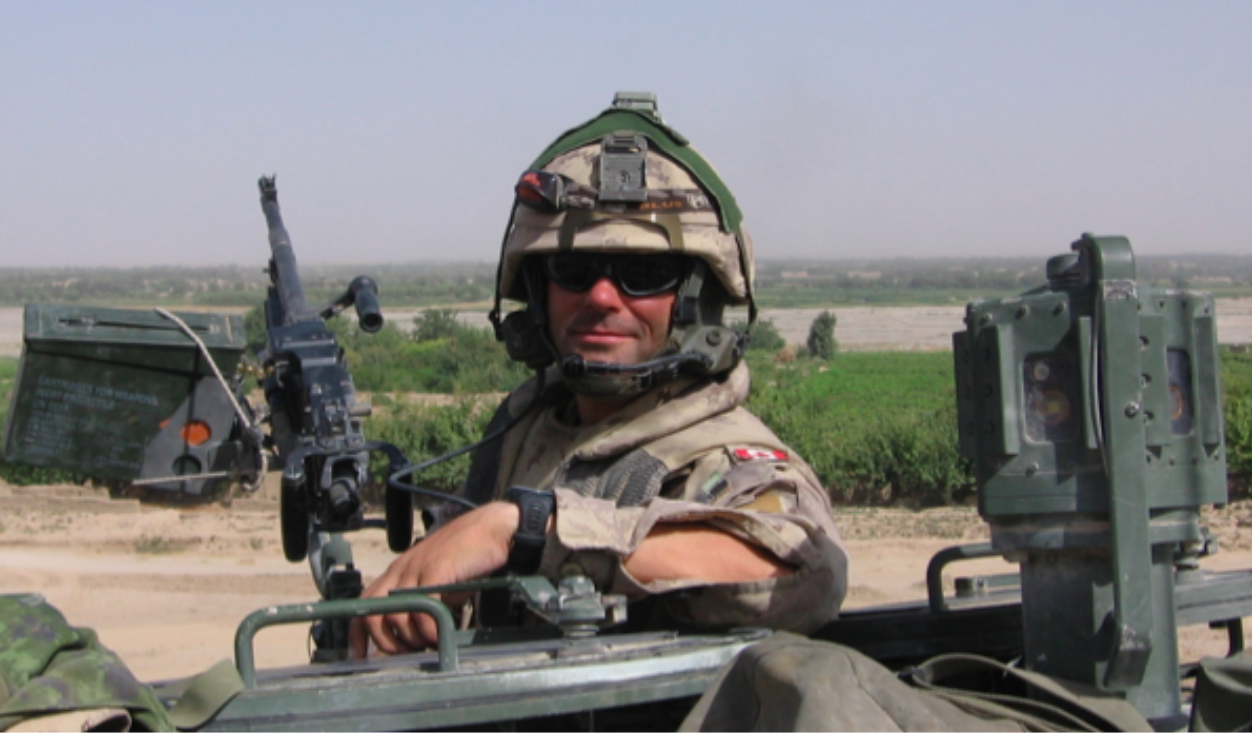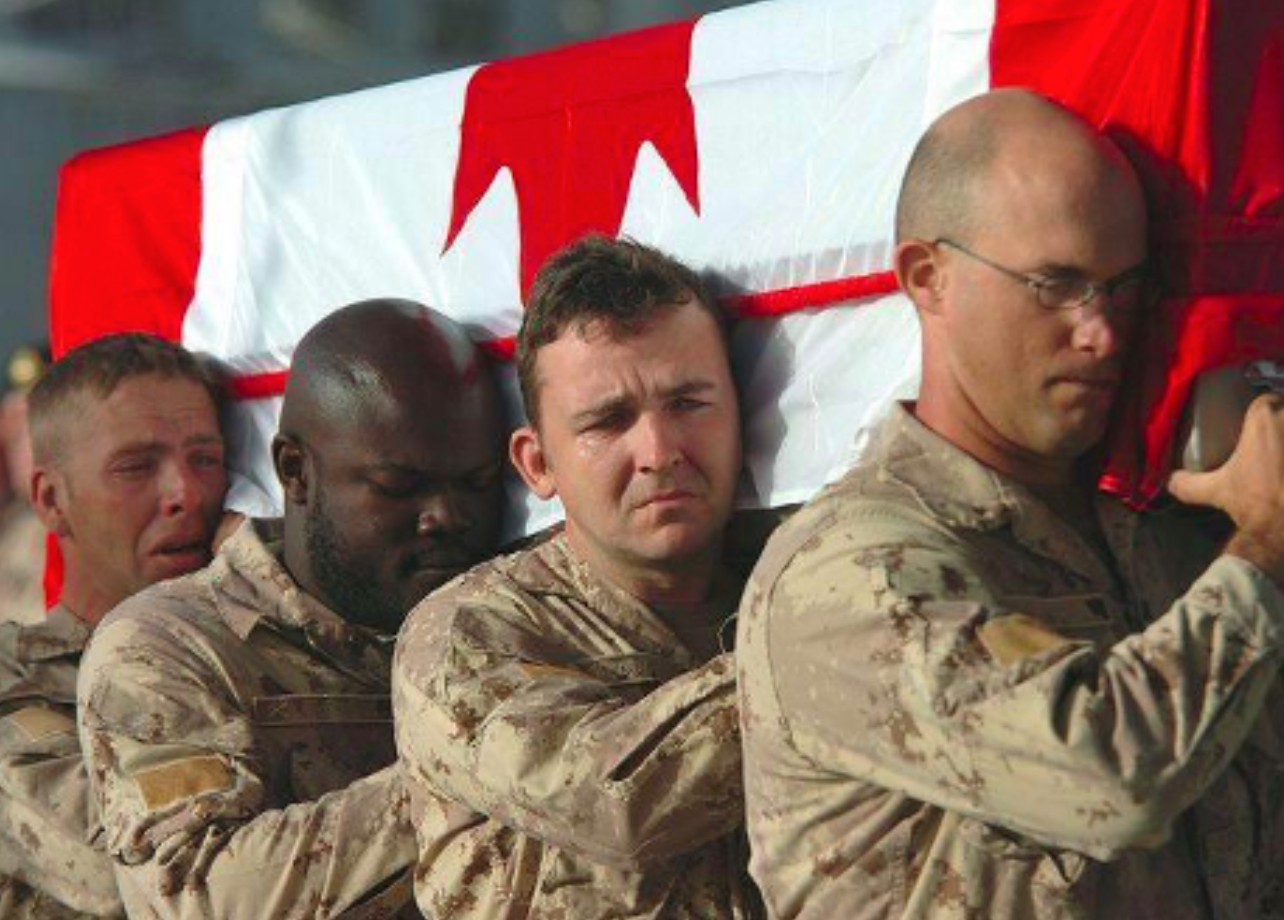In 2006 I deployed as the commander of 23 Field Squadron—135 soldiers, sailors, and aviators drawn from across the Canadian Armed Forces. In our ranks we had bomb disposal technicians, heavy equipment operators, map makers, and other specialists all supporting a core of combat engineers. We were part of a larger Canadian Battle Group (combination of infantry, tanks, reconnaissance, artillery, medical, and logistics) of about 1,300 troops.
The purpose of combat engineers is to allow friendly forces to live, move, and fight on the battlefield and to deny the same to the enemy—in this case the Taliban. Our time in Kandahar coincided with Operation Medusa, Canada’s largest combat operation since the Korean War and, at the time, NATO’s largest combat operation in its history.
On 2 September, 2006 NATO forces, the bulk of them Canadian, secured positions to the north (Patrol Base Wilson) and south (Ma’sum Ghar) of Objective Rugby, the Taliban main defensive position. The next day we were ordered to launch the initial assault.
Elements of the Squadron were attached to various infantry and reconnaissance sub-units to provide engineer support largely in the form of battlefield mobility and protection from explosive threats. Riding in my eight-wheeled Light Armoured Vehicle, I was located at Ma’sum Ghar, a small mountain to the south of Objective Rugby. Parked partially up the mountain, I was in an overwatch position—meaning that I could see the battle unfold 1-2 kms away and was monitoring two radio “nets” (frequencies allocated to various organizations). In my left ear was the Battle Group net, where I could speak to my boss and my peers. In my right ear was the Squadron net, where I could speak to my troops.

Table of Contents
Toggle[Major Mark Gasparotto standing in the crew commander’s hatch in the turret of a Light Armoured Vehicle (LAV). The LAV 3 was located at Ma’sum Ghar overlooking the battle at Objective Rugby]
Looking through my binoculars and the turret optics it was difficult to tell how the battle was unfolding. I tried to get information from my 2 Troop Commander who was leading the engineer elements during the assault. He wouldn’t answer me on the radio. Or more likely he couldn’t because he was involved in the fight of his life surrounded by the bullets, bombs, smoke, fire, and chaos.
Fighting through the kill-zone, the assault force was surrounded by hundreds of well armed, well fortified Taliban soldiers who rained down fire from small to heavy weapons, rocket propelled grenades, and armour-piercing recoilless rifles.
In the end the attack was not successful and four Canadian soldiers were killed, including one of my own, Sergeant Shane Stachnik. After breaking contact with the enemy, the assault force returned to Ma’sum Ghar to regroup.
Several lessons emerged from that fateful day, once we could get over the denial and the blame. For those who could get over the denial and the blame. Here are the major lessons that I learned from that experience:
1. Resource, task, and get out of the way.
Mission command is a military concept whereby a commander issues intent based orders, articulating the why and the what and to the greatest extent possible allowing the subordinate to figure out the how. For this to work requires mutual trust, shared understanding, clear intent, disciplined initiative, and taking prudent risks.
I had trained and resourced my team. They were attached to an infantry company and given their tasks for the assault on Objective Rugby. For this mission they were no longer under my control and my impatience to get information simply added to my 2 Troop Commander’s stress. And that impatience, the opposite of impulse control, meant that I was less effective as a leader that day.
As I have come to better understand, a leader must constantly shift their location and perspective to achieve the greatest impact. There is a balance to be had between maintaining a broad perspective, supervising your people’s work, and intervening when necessary to assist at the point of friction.
2. Train to failure and beyond.
We never lost in training, not seriously at least. And yet to survive and thrive in chaos, you must train to failure and beyond.
We were tactically and technically adept. We were some of the best soldiers that Canada had ever trained for war. But what we learned the most (and frankly what we had the most to learn) were the emotional and spiritual aspects of going to and coming home from war. While still demanding, it is much easier to develop the physical and intellectual aspects of our humanity.
Training to failure and beyond for an army at war means learning how to deal with the loss of life and the taking of life, while keeping your own humanity intact. We left Canada as novices in this arena and returned as battle-hardened soldiers. There was a price to pay for this hard won experience, a price we continue to pay in terms of soldier’s mental health. We will never the know the precise answer, however how many among us would have been saved the ravages of PTSD and suicide had we trained, across all aspects of our humanity, to failure and beyond?

[Ramp ceremony. Sergeant Shane Stachnik’s comrades carrying him onto the aircraft for his final flight home]
3. Holding a creative tension. Leadership, as is life, is full of tensions.
These are often polar or contradictory in nature. Another word is paradox. Polarities and paradoxes are things that cannot be reconciled. They don’t cancel each other out. They will always remain in tension. The fundamental leadership tension exists between accomplishing the mission and looking after your people. Another is adapting to external forces while fostering internal stability.
War provides the purest and yet most extreme environment for these tensions. Serving in combat with soldiers was the greatest honour of my professional life. It remains a heavy burden. Accomplishing a mission against an armed enemy requires putting troops in harm’s way. Sometimes people die. Believing in the mission, the greater good, and the military ethos of service before self strengthened my ability to hold these forces in a creative tension.
I have two daughters. I have given life. I have pulled the trigger and taken life. These two acts do not cancel each other out. There is no balancing of the books. I must live with those two life-defining experiences and I must do so without being pulled apart by them. Life is a paradox. The best leaders embrace that fact and hold life’s contradictory forces in a creative tension.
Do you know how to get out of the way? When and where is it appropriate?
Are you ready to not just survive but thrive in chaos and uncertainty? What does testing your products and services to failure and beyond look like in your context?
Are you capable of embracing paradox? How well do you hold life’s opposing forces in a creative tension?
Gasparotto Group helps organizations create cultures that develop highly effective leaders and build strong, resilient teams.